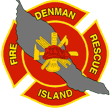If there’s a fire, get everyone outside and ask a member of your family to call the fire department from a neighbour’s house. Only then should you permit yourself to fight a small fire. If the fire becomes large, get out. Close doors behind you to slow the spread of the fire.
The ABC’s of Household Fire Extinguishers
A fire extinguisher is a storage container for an agent like water or chemicals. It is designed to put out a small fire, not a large one. Common fire extinguishers for household use are labeled A,B or C. Ensure you use the right extinguisher for the appropriate type of fire.
- Ordinary Combustibles – a Class A type extinguisher can be used for fires involving paper, wood, drapes and upholstery.
- Flammable and Combustible Liquids – Fires originating from fuel oil, gasoline, paint, grease in a frying pan, solvents and other flammable liquids require a Class B type extinguisher.
- Electrical Equipment – Fires started with wiring, overheated fuse boxes, conductors, and other electrical sources require a Class C type extinguisher.
Our Recommendation
A 5-pound to 10-pound multi-purpose dry chemical unit labeled A B C is the most practical household extinguisher. This size and type extinguisher can put out most types of fires (wood, paper, cloth, flammable liquids and electrical fires) at the early stage of a fire.
For effective use of a fire extinguisher, learn how to PASS
- Pull the pin. Some units require the releasing of a lock latch, pressing a puncture lever, inversion or other motion.
- Aim the extinguisher nozzle (horn) at the base of the fire.
- Squeeze or press the handle.
- Sweep from side-to-side at the base of the fire and discharge the contents of the extinguisher.
If you are in need of servicing, or new purchase, of a fire extinguisher. There is a company in Courtenay, Campbell River Fire Safety Service Inc., 259 Puntledge Rd, 250-338-7203, that will be happy to help you.

